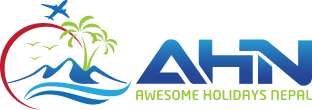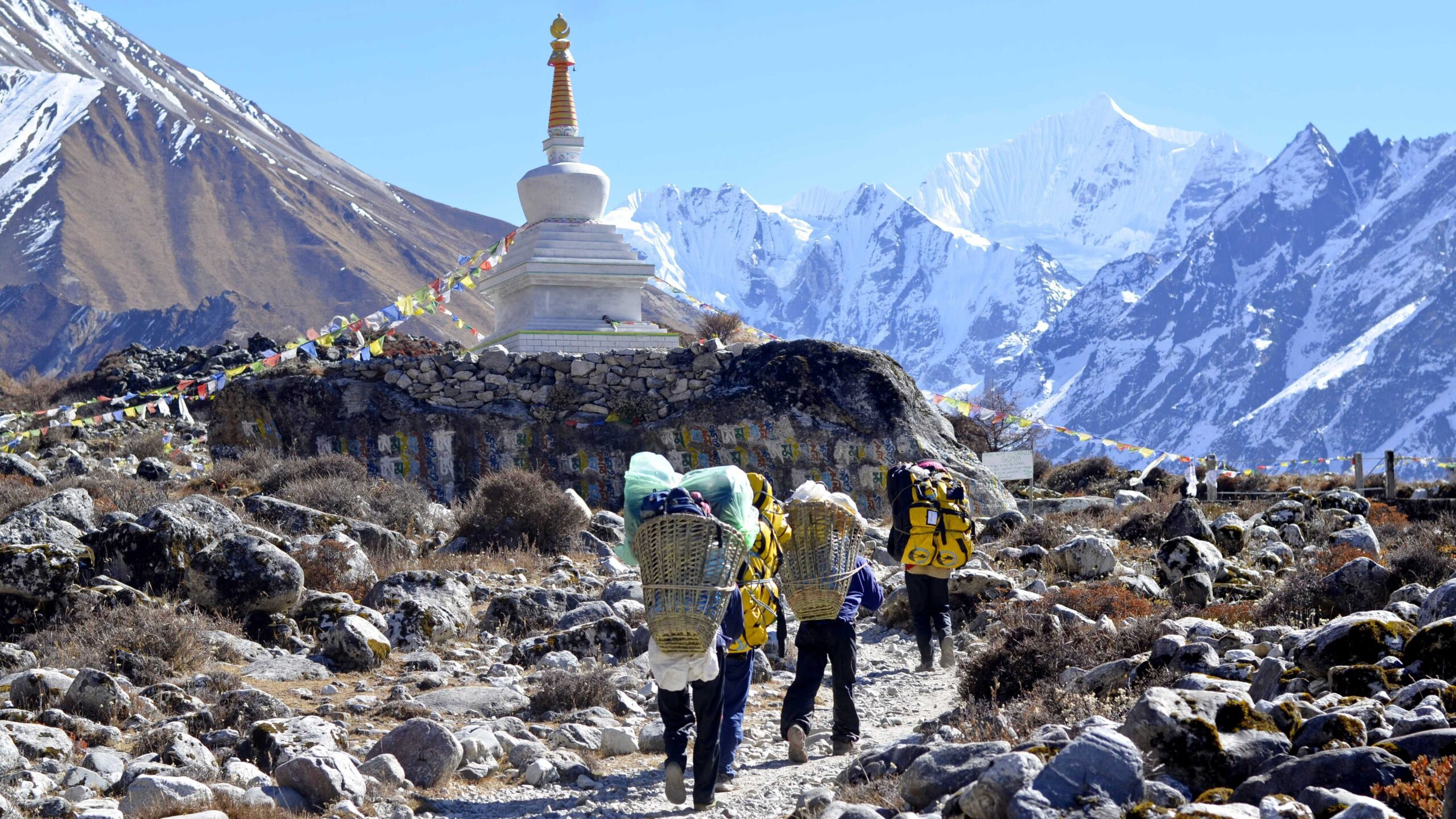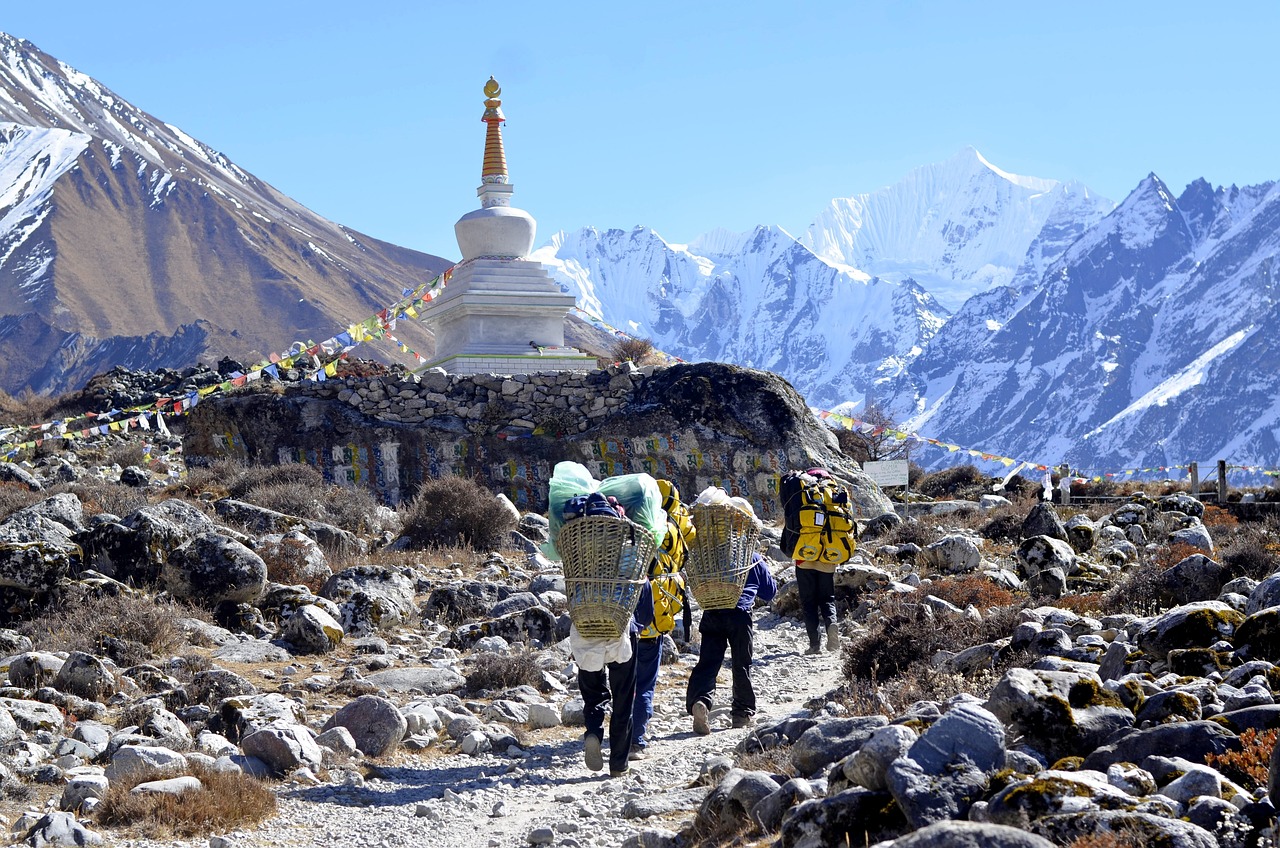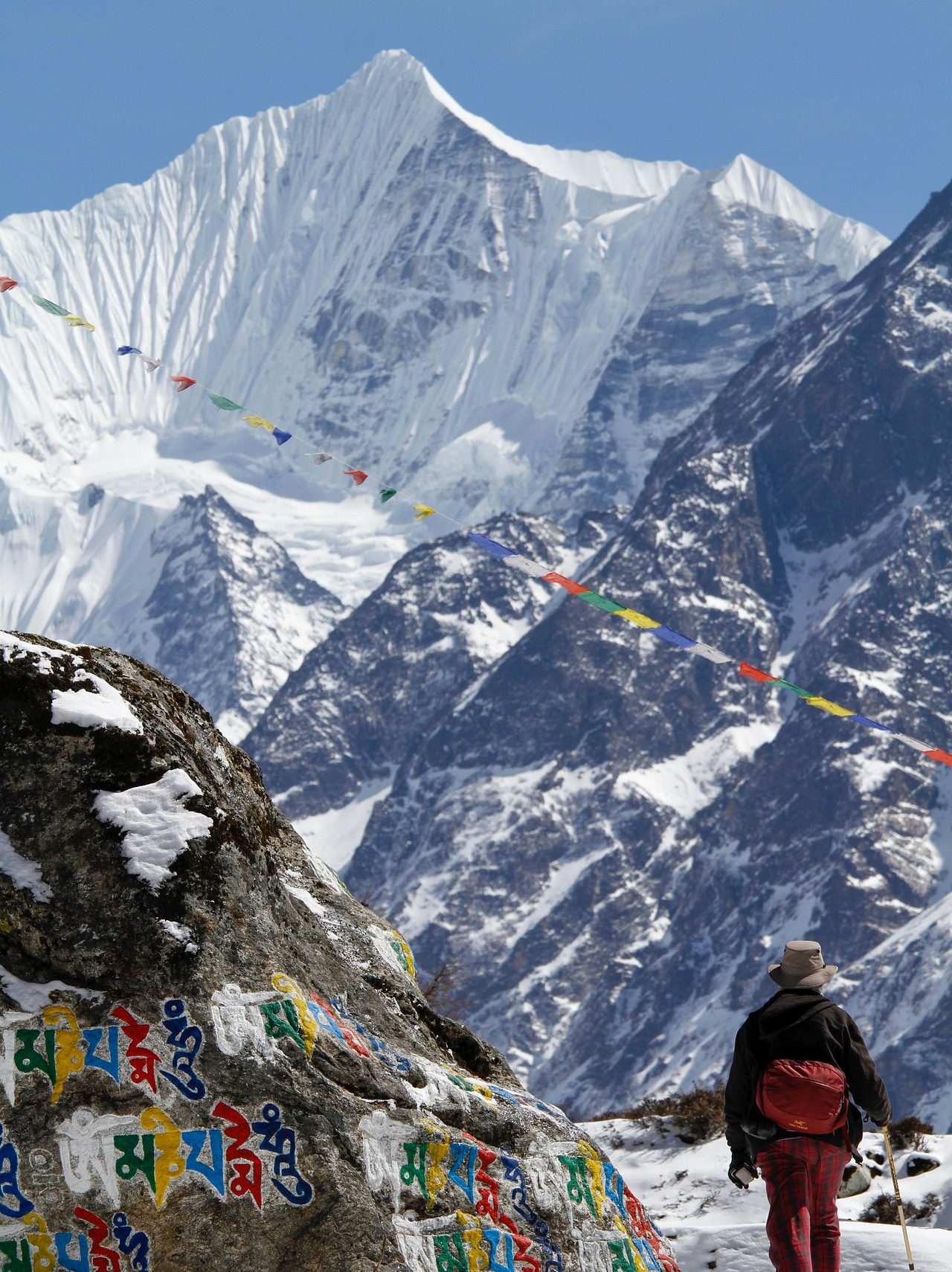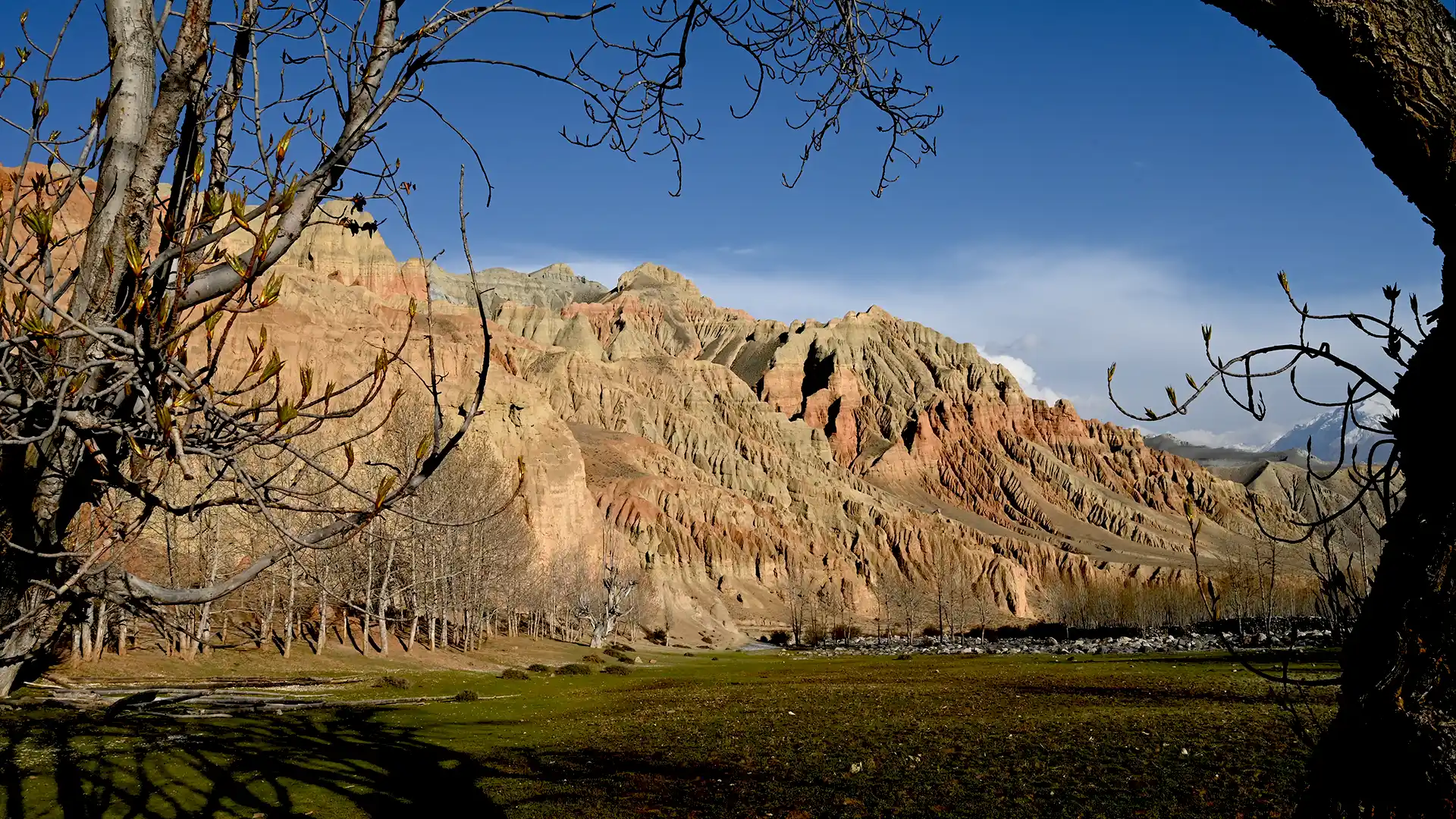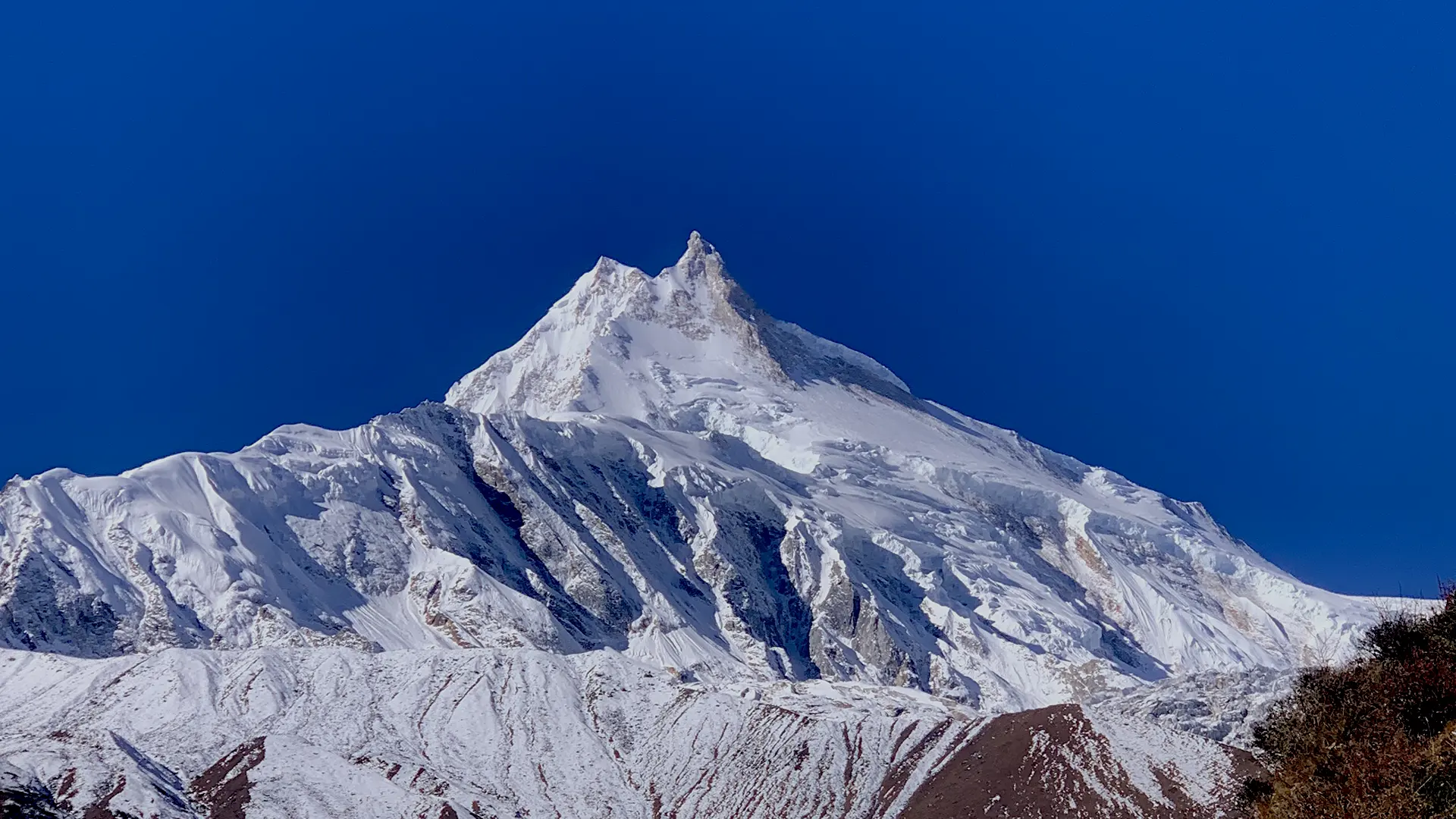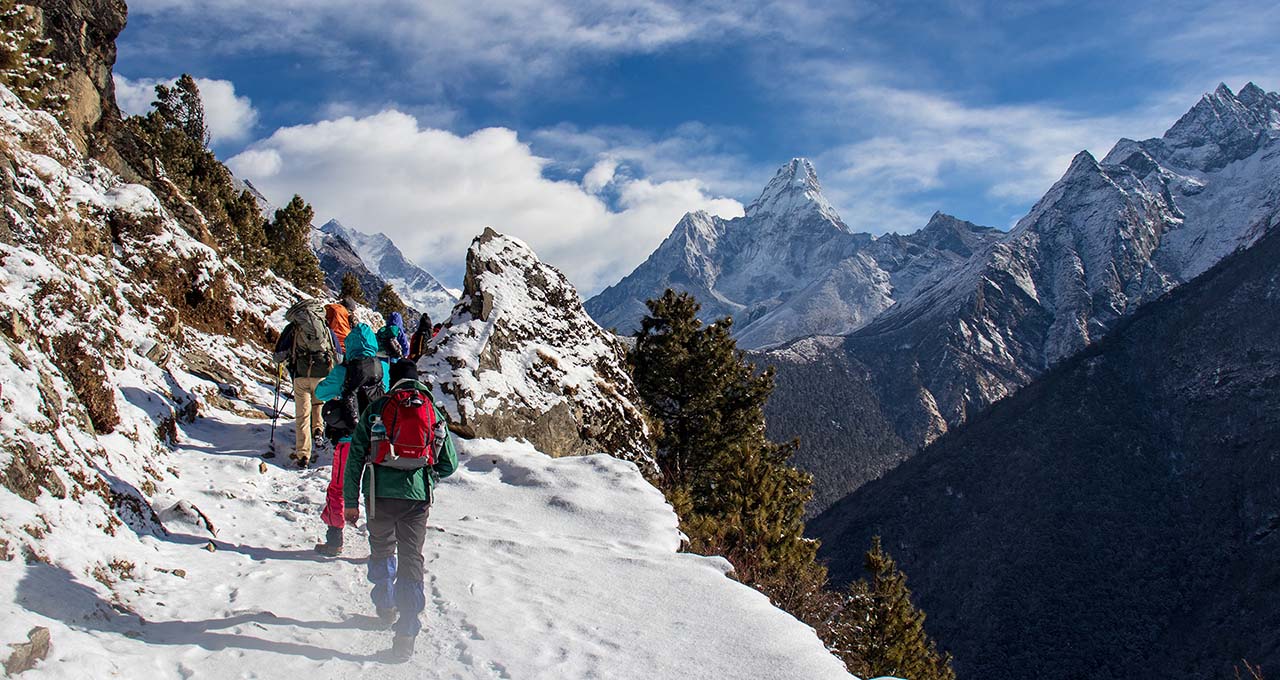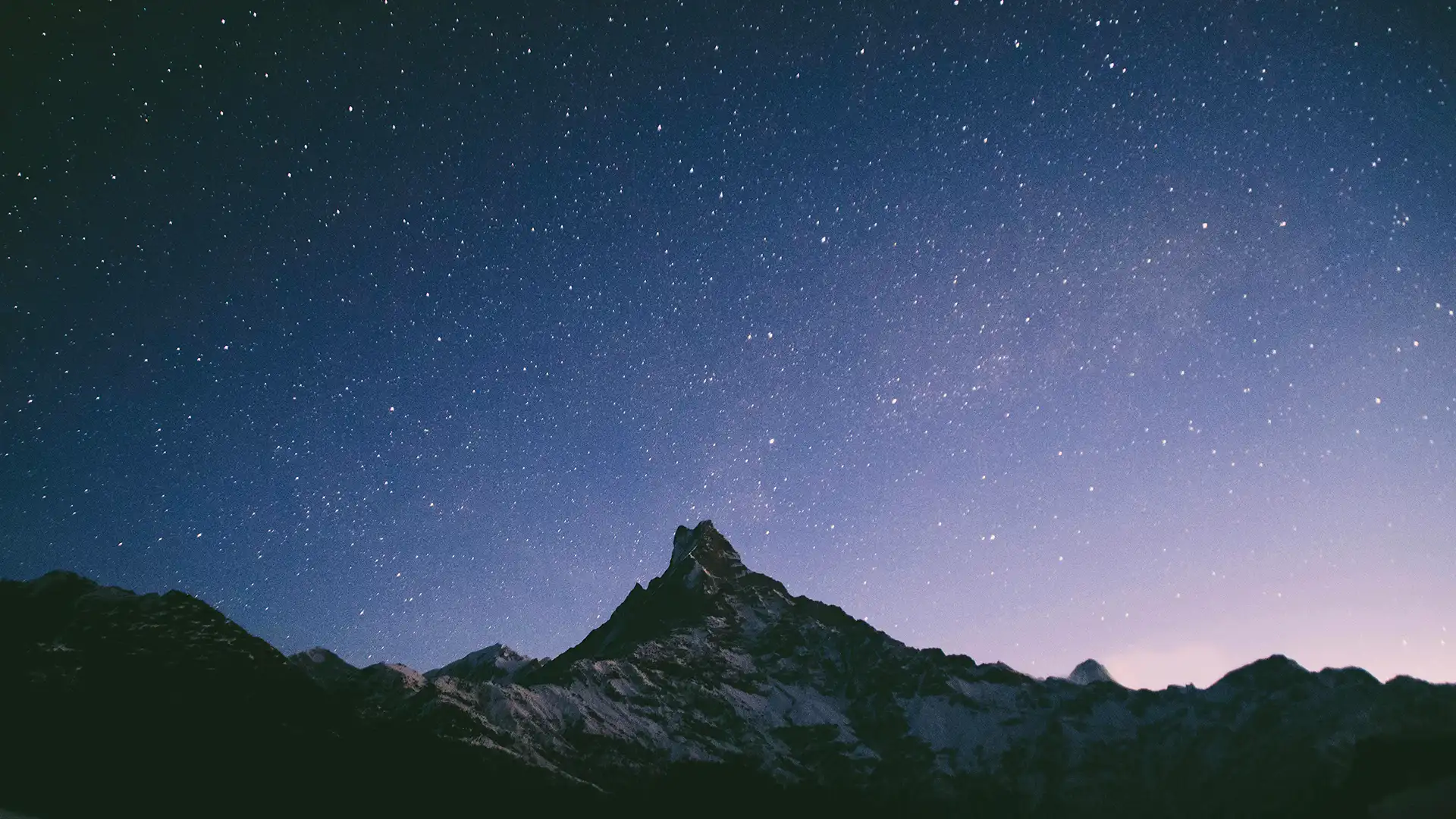Langtang Region
Langtang Valley
A beautiful trekking destination located just on the outskirts of the capital city, this is precisely how most travelers know about the Langtang region. Offering a variety of alternative trekking routes and destinations, Langtang has been explored for a long time by many. Many pilgrimages also visit this area annually to take a holy dip in the high-altitude Gosaikunda Lake found in this region.
Why Langtang Region?
Langtang region has been a popular destination among travelers for multiple reasons, whether it may be domestic or international travelers. In addition to the breathtaking mountain scenery, the cultural experience, biodiversity, and water bodies of the Langtang region are worth watching. Some of the famous treks of this region are the Langtang Valley Trek, Gosaikunda Lake Trek, Helambu Valley Trek, Tamang Heritage Trek, Ganjala Pass Trek, and Tilman Pass Trek.
It is a plus point to be a trekking destination closer to Kathmandu Valley. Besides that, the Langtang region has a perfect fusion of cultural heritages, natural wonders, and history, making it a preferred trekking destination. The trail that takes you through various trekking destinations is covered in luscious greens if you opt to trek in the spring season. Similarly, the sight of the frozen lake in winter is another mesmerizing part of the Langtang region.
Given its proximity to the Tibetan border, this region’s cultural practices are heavily influenced by Tibetan Buddhism. However, the lower regions are inhabited by people of mixed ethnic backgrounds, which is also evident in the food available in the region.
Highlights of the Langtang Region
1. Panoramic Views of Langtang Range, Yala Peak, Ganesh Himal, and other peaks.
2. Experience of traditional Tamang culture in several villages in the region.
3. Cultural Immersion at Kyanjin Gompa, an ancient monastery in the region.
4. Trek through a modern route through Rich Cultural Forests.
5. Diversified flora and fauna of Langtang National Park, including rare Red Pandas, Himalayan tahr, musk deer, and so on.
6. A trek to the frozen Gosaikunda Lake and seven more neighboring lakes.
Top 10 Things to Do in Langtang Region
1. Enjoy the Mountain Views from Tserko Ri or Kyanjin Ri
The two high-mountain passes, Tserko Ri and Kyanjin Ri, offer the most exquisite view of the Langtang range and Ganesh Himal. At an altitude of 4773 meters (15655 ft), they offer a panoramic view of the mountain ranges, the valley, and glaciers. While trekking to this ridge, you can also enjoy the simplicity of Kyanjin village and experience the divinity of Kyanjin Monastery.
You can also take a similar view from Tserko Ri, situated at an altitude of 5033 meters (16,500 ft). Due to its elevation and remoteness, this ridge is slightly more challenging to ascend.
2. Take Holy Dip in Gosaikunda Lake
Undoubtedly, the Gosaikunda Lake, a high-altitude lake at an elevation of 4380 meters (14370 feet), is a significant highlight of the Langtang region. Covering an area of almost 34 acres, it is a high-altitude freshwater lake that also has religious value and is an iconic destination for a multitude of activities.
According to mythological legends, this lake actually formed when the Hindu god Lord thrust his trident as a reaction to gulping the Halahala poison that came out while churning the ocean. This is why devotees visit it as a pilgrimage, more specifically during a festival called Janai Purnima. This auspicious occasion falls on a full moon day during mid- to end-August.
Many trekkers also come to Gosaikunda simply for the eye-catching summer trail, while others come in winter to jump on the frozen lake. You can enjoy local yak cheese en route to Gosaikunda, along with yummy meat delicacies of Himalayan goat.
| Note: The lake is a popular destination for pre-wedding photoshoots. |
3. Explore the Red Pandas of Langtang National Park
The Langtang National Park is indeed one of the unmissable destinations of the Langtang region. Usually, you will get across the national park area en route to the Gosaikunda Lake and Langtang Valley. However, this natural heritage area extends over different districts, including Rasuwa, Sindhupalchowk, and Rasuwa, along the Nepal-Tibet border.
This park is characterized by subtropical vegetation with Chirpine, Rhododendron, and Nepalese alder trees. It is home to several rare animals, including the endangered species of red panda, Himalayan tahr, and Musk deer. Many researchers visit these areas of the Langtang region every year to study the high-altitude red pandas found only in the Himalayas of Nepal and China.
4. Ganesh Himal Trek
If you see a Himalayan region from different regions of Kathmandu, it is likely to be the Ganesh Himal. This means that if you want to trek to the Himalayas closer to the valley, then this particular mountain is your destination. Leading you through secluded trails and remote villages, the Ganesh Himal trek gives you a one-of-a-kind, most memorable experience.
This location is also a good spot for exploring the country’s natural beauty and the simple life of local inhabitants. If you are lucky, you will also be able to witness 526 different species of plants and 300 different species of fauna. Another major attraction of this region is the mesmerizing sight of twin waterfalls, Ganga and Jamuna, and hot springs named Ganesh Kunda and Kalo Seto.
Honestly, this trekking destination is a good alternative for someone who doesn’t want to do the mainstream ABC or EBC. You can complete the trek in 8 days or extend it to 16 days, including Ruby Valley in the itinerary.
5. Cultural Trek to Helambu
Beginning at Sundarijal, the Helambu circuit trek offers a variety of experiences to pilgrims, whether Hindu or Buddhist. In addition to breathtaking vistas of the mountain ranges, the cultural trek takes you closer to the lifestyle of Sherpas of Tibetan origin, often called Hyolmo, for following Tibetan Buddhism. These people are also called Helambu Sherpas for their origin, having ancestral linkage to Sherpas and Tibetan.
Similarly, a few ethnic races, such as Yohlmo Tamang, are other glorified residents of this region, along with Brahmin and Chhetris.
The Hyolmo culture of this region is a major highlight; hence, the trek is often called the Hyolomo Heritage Trek. You will gain an insight into their lifestyles while exploring many Buddhist monasteries at stops like Sermathang, Ghangyul, and Tarkeghyang.
6. Trek to Langtang Valley
Coming to the pinnacle of the Langtang region, the trek to Langtang Valley is indeed a delightful journey. This trek starts with a scenic drive through the Trishuli River from Kathmandu to Syabrubesi or Dhunche.
Along with majestic mountains, rough and rugged trails, and stunning waterfalls, this region is also blessed with rhododendron forests and bamboo on the trails, making the trek genuinely captivating. You will also get to experience warm hospitality and the rich cultures of people settled around this region.
7. Walk through the Tamang Village
Many wanderers who have been to the Langtang region have often been amazed by the memorable experience of traditional villages. Starting from Dhunche or Syabrubesi, the Tamang Heritage trail leading to settlements of the ethnic group in Gatlang and Gojlung are iconic attractions.
You will experience the rich culture, food, and lifestyle of this indigenous group in the Langtang region. Walking through the rhododendron forests, you can also soak in the serenity of Langtang mountain ranges from these villages. Since it is more of a relaxed trek, it is suitable for all age groups.
8. Pay a Visit to Kyanjin Gompa
Synonymously referred to as the spiritual center of Langtang Valley, the Kyanjin Gompa is an unmissable highlight of the region. In addition to breathtaking views of the snow-capped mountains, it is the best place to experience the Buddhist culture of this region.
You will also have an opportunity to visit the infamous Kyanjin monastery and other small monasteries along the route. The monastery’s captivating wall murals, paintings, and detailed carvings speak of Buddhist values and teachings.
If you are searching for peace and purpose in life, there is no better way than to trek through the Langtang region and visit Kyanjin Gompa.
9. Taste the Infamous Yak Cheese
Indeed, the traditional cuisines of Langtang’s ethnic residents are really good. But the Yak cheese specifically found in this region is something you shouldn’t miss at all. Established in 1952, the cheese factory was supported by the Swiss government and the World Food Organization.
The cheese factory has undoubtedly contributed to the residents’ livelihoods and given visitors a reason to visit the Langtang region. While in the region, you can watch the cheese-making process and taste a few.
During the peak season, usually on the Full moon day of August, the locals also distribute yak cheese to the pilgrims.
10. Climb the Yala Peak
Situated on the northern side of the Langtang Valley, the 5530-meter-high Yala Peak is quite a popular trekking destination. Best suited for adventurers who are just starting out on challenging climbs, the peak is also a closer destination to many.
To summit the peak, you will need a Yala peak climbing permit and a TIMS card. One can climb the peak in three days from its base, stopping at Yala Kharka, the highest base camo for the summit.
As you reach the peak, the mesmerizing view of Shishapangma welcomes you.
Trek With Awesome Holidays Nepal
Anyone can take you on a trek, but not all can lead your path with the utmost comfort and memorable encounters! Awesome Holidays Nepal is one such travel and trek company dedicated to curating tailor-made treks suited to your needs and utmost comfort while keeping your safety a prime concern. Based in Nepal, Awesome Holidays has a team of experts who have decades-long experience guiding guests through many adventurous yet luxurious expeditions.
Following are some of the prime reasons why you should trek with AHN:
1. Awesome is committed to your travel needs.
2. Travel Safety is always our primary concern.
3. Our tailor-made itineraries offer the best value for your money.
4. Awesome offers the flexibility to customize your treks based on your needs.
5. A team of professionals who are always there to aid your trek and travel experience.
6. Awesome Holidays Nepal is trusted with over a 95% success rate and excellent Travel Advisor Reviews.
7. An ever-ready support team always backs up while on a trek.
If you want an Awesome trekking experience, then you should definitely travel with Awesome Holidays Nepal.
How to Get to Langtang Region?
Since the Langtang is spread out wide around the hulls surrounding Kathmandu Valley, there are different ways to access it. People often begin their journey from Syabrubesi, Dhunche, or Sundarijal. To reach Syabrubesi or Dhunche, you can take a ride from Kathmandu and then start the journey from the respective starting points.
Similarly, the other way around the Langtang region is through Sundarijal. To reach this starting point in Kathmandu, you will have to drive an hour from the city area and then begin hiking.
Best Time to Visit the Langtang Region
Fall and spring are the best seasons to trek in the Langtang region. Since the climate is suitable, the trails are dry, and the skies are clear during these two seasons, it is also the best season for climbing to the Himalayan regions of Nepal. Usually, during September-November and April-May, most visitors ascend through different trekking routes of the Langtang region.
Food & Accommodation in the Langtang Region
Tibetan traditions and some ethnic races, like Tamang, highly influence food in the Everest region. While in Syabrubesi, Dhunche, or Sundarijal, you will most likely get options for Chinese and Nepali cuisine with some fast food. However, as you ascend to a high altitude, food during the trek has limited options. Tea houses will serve mostly Tibetan and Sherpa cuisine, which includes food like lentil soup, Rice, Bread, Noodles, Potato, etc.
Similar is the case with accommodation. The base area has options of standard luxurious accommodation. But while on the trek, you will stay in standard teahouses with clean rooms and bathrooms. With an additional charge, you can also get private rooms with attached bathrooms.
Explore Our Exciting Packages
Discover Unforgettable Adventures Await in Langtang Region
FAQs
When is the best time to trek to Langtang Region?
The best time to trek the Langtang Region is during the Autumn and Spring seasons, as the climate is favorable and the trekking route is rich in luscious greens. For a safe, memorable, and awesome experience, plan a trek between mid-September and November or March and June.
However, the trek is possible all around the year. As long as you can avoid rainstorms and sustain extreme temperatures, you can ascend during colder months to avoid the crowd. If you want to experience the frozen lake, visiting in December/January is better.
How long does the trek take?
Depending on the route and itinerary, your trek to the Langtang region can range from 5 to 11 days. An ideal trek to Langtang Valley usually takes a total of 8 days, starting from Kathmandu, while a trek to Gosaikunda usually takes 6 days to complete.
Do I need to book in advance?
Though it might not be mandatory, booking your Langtang region trek in advance is better to ease the process, specifically if you plan for trekking seasons, as mentioned above.
Booking in advance secures your spot and ensures you and your trekking company are well-prepared for the trek. However, getting the trekking permits, booking accommodation and transport, and getting your visas might take time.
What kind of fitness level is required?
You will require a moderate fitness level to trek to the Langtang region since the trek demands you to walk at least 6-7 hours a day. You will require good cardiovascular endurance and muscular strength to ascend quickly through rough terrains.
If you aren’t somebody who doesn’t perform physical training regularly, it is better to start training at least ¾ months in advance. Ensure you include cardio, flexibility exercises, and strength training in your workout to prepare your body for the trek.
What permits are required?
You will require two passes, the Langtang National Park permit, and the TIMS card, to trek through the Langtang region.
How much does the trek cost?
A standard trek to the Langtang region can cost around $600 -$900 per person. However, the cost may vary depending on the customization of food and accommodation, the variation of the trekking package, and the routes you choose. An addition to the Tamang Heritage Trail trek can incur an additional charge.
The trekking cost doesn’t include any personal expense or charge for the services made upon request. Please check the packages for the price and find the amenities/services offered.
Do I need travel insurance?
It isn’t mandatory to take travel insurance for shorter treks to the Langtang region. But it is advisable to take one to prepare in advance for possible catastrophic situations on the trek.
Can I customize my itinerary?
Yes, you can customize your itinerary to fit your needs. We can add or deduce the acclimatization days, optimize the trekking route, and shorten or elongate the trek as you prefer.
However, if you have booked for our regular trekking package that moves as a group, customizing the itinerary just for an individual isn’t possible.
What is the best way to train for the Langtang Region?
Some of the best ways to train for the trek are through regular cardio, focusing on breathing exercises, strength training, lifting weights, hamstring sketching exercises, and so on. You can also switch to climbing stairs instead of lifts, walking, or jogging instead of driving to smaller distances to prepare your body.
Additionally, going on regular hikes or climbing up the hills can be the best way to train for the trek.
What kind of gear do I need?
Apart from lightweight and warmer clothing, you will require trekking poles, hiking boots, headlamps, sleeping bags, sunglasses, toiletries, and solar batteries to trek to Everest base camp.
Do I need vaccinations?
It isn’t mandatory to get any vaccinations to trek to the Annapurna base camp. However, you can check your respective country’s travel regulations and vaccinate yourself before visiting Nepal.
Typically, you can get routine vaccines, including Malaria, Japanese Encephalitis, Hepatitis A, Hepatitis B, Typhoid, Rabies, and Cholera vaccines.
What currency should I carry?
You will need Nepalese rupees for your Langtang region trip for any personal expenses other than those offered by the trekking company. However, it is better to have some USD or your home currency as a backup for emergencies or returns.
Make sure to exchange your currencies for Nepali rupees in Kathmandu to find the best rates
Do I need a visa for Nepal?
You will need a “Tourist Visa” to travel to Nepal. It is a visa that is available on arrival for most foreign visitors except for African countries, Afghanistan visitors, and refugees with travel documents.
Check the official website of the Department of Immigration for information regarding On Arrival and other tourist visas in Nepal.
Is it possible to trek solo?
It is possible to trek solo to the Langtang region. However, you must be well prepared to adapt to the exciting yet exhilarating trek. You will need that additional physical and mental strength to trek solo to any destination.
A solo traveler must get the required documents to get the permit.
What is the trek route like?
The trekking route to the Langtang consists of rough rocky terrain, a couple of steep hills, stairs, and narrow trails. Along your path, you will encounter suspension bridges, a biodiversity conservation area, luscious green forests, and locally inhabited villagers.
What kind of accommodation is available?
While standard, three-star, and five-star accommodations are available in Kathmandu, the options might be restricted on the trekking route. You will most likely find tea houses with clean rooms along the route.
And yes, it is possible to get private rooms or rooms with attached bathrooms, but you will have to pay an extra charge.
How do I get to the starting point?
If you want to trek through the Langtang region, you can reach the starting point, i.e., Dhunche or Syabrubesi, via a private jeep or an SUV ride.
Is there electricity and Wi-Fi available?
Yes, electricity and Wi-Fi are available in most of the teahouses en route to the Langtang region trails. However, it might be costly to access internet services and charge your devices at these stops, and the reliability of the connection is questionable, too. You can carry rechargeable solar batteries for electricity.
How much luggage can I carry?
Since you will be traveling on a bust and then hiking along the trekking route, there is no restriction on the luggage you can carry. However, it is better to travel light.
What is the food like on the trek?
The guesthouses and teahouses primarily serve Nepali, Tibetan, and other ethnic cuisine, including Rice, Pulses, Bread, Noodles, and Soup.
Are there showers available?
Yes, showers are available on the trek to Langtang Valley or Gosaikunda Lake, but it’s recommended that you avoid showering at higher elevations.
Can I charge my electronics?
There are provisions for charging your electronics in rest houses, teahouses, or local stays. But remember to carry the required adapters (C type and D type) with you to fit in your chargers.
What kind of toilets are available?
The teahouses have clean but fundamental squat toilets en route to Langtang Valley and Gosaikunda Lake. In case of emergencies, private areas along the trail can also be found to relieve the pressure.
Is it possible to do laundry on the trek?
Yes, doing laundry on the trek to Langtang region is possible. However, the water is cold, so we suggest you do not use it unless required. Packing enough clothes is better than looking for laundry in elevations with cold water.
Can I buy snacks and drinks on the trek?
You are less likely to find a store to buy snacks and drinks on the trek as it is a remote area inhabited by fewer people. However, the tea houses along the trail do sell biscuits, candies, and other snacks.
We advise you to carry protein bars, dried nuts, and fruits to snack when you want. For drinking water, you can bring a refillable bottle with a filter to drink water from sprouts or springs along the way.
Are there ATMs along the trail?
Yes, you can find a few ATMS at Dhunche, but none are on the trekking trail.
How do I deal with altitude sickness?
If you get altitude sickness on your way to Langtang Valley or Gosaikunda Lake, let your trekking guide know about the situation. The guides are prepared with first aid required for such a situation.
Rest for a while at the same spot for a while and take the anti-sickness medications. You can descend to a lower altitude after you feel a little better. If the situation worsens, request the guide reach out to the head office in Kathmandu for a helicopter rescue.
What should I pack for the trek?
You should pack warmer clothes, trekking gear, all your necessary medications, and your travel documents for the trek. Additionally, it is good to pack protein bars, dry nuts, and fruits for snacking on the trek, along with a refillable water bottle.
Even though the company will provide you with packaged water bottles along the journey, it is convenient to carry your own.
Are there medical facilities along the way?
Medical facilities are very limited on the trekking routes of the Langtang region except in towns like Dhunche. We suggest you carry all necessary medications in your backpack before you drive to the base.
Is it safe to drink the water?
Water from natural sources looks clean in the Langtang region, but it might not be safe to drink. You can purify the water using bottle filters, chlorinate it, or boil it to make it potable.
What should I do in case of an emergency?
The first thing you can do in an emergency is reach out to our trekking guide. Our trekking guides are equipped with oximeters, and necessary first-aid kits and trained to handle any kind of emergency.
Besides, the guides will have all the necessary contacts to contact emergency rescue services such as helicopter rescue, air ambulance, or land rescue.
How can I prevent altitude sickness?
The best way to prevent altitude sickness is by taking proper rest after your trek, acclimatizing to the altitude, staying hydrated, and avoiding alcohol while on the trek.
What should I do if I experience altitude sickness?
Whenever you feel sick due to altitude, stop immediately and rest for a while. Hydrate yourself and take medications to ease the pain.
You should never try to ascend or descend right away whenever you are experiencing altitude sickness. Let your trekking guide know about your situation and request an emergency rescue if the condition worsens.
What medications can help with altitude sickness?
Acetazolamide (usually sold under the name Diamox) can help you with altitude sickness. As it reduces the severity of any observed symptoms as well as helps you adjust to high altitude quicker, Diamox is often suggested to treat acute altitude sickness.
Some other medications that can also help are Dexamethasone, Nifedipine, and Ibuprofen. It is safe to consult your physician and take the medications in advance to prevent allergies or any undesired reaction against the drugs.
What other health concerns should I be aware of?
You should be aware of any medical conditions that you might have before planning the trek. If you have pulmonary diseases, asthma, or any other breathing-related illness, it’s better to get it checked and prepared in advance with medication and stimulatory exercises.
Additionally, you should be aware of any allergies that you might have before you trek. It is always best to avoid food, drinks, or agents that can instigate a hypersensitive reaction in your body to prevent any illness on the route.
Is it safe to trek alone?
It isn’t too safe to trek alone in the wilderness. If you are planning to trek to high-altitude mountains like the Langtang region, which can often have unpredictable weather, is prone to natural calamities, and involves risky and rough terrains, it isn’t safe to travel solo.
If you know the route very well and are mentally and physically prepared to trek alone, go for it. Otherwise, it is recommended to take along a travel guide who knows the route well to have a smooth trekking experience.
What should I do if I get injured?
If you get injured during the trek, stop for a break and take the necessary first aid. If you have a serious injury that needs immediate attention, call for emergency rescue with the help of your trekking guide.
Are there any dangerous animals on the trek?
Since the trekking route takes you through conservation areas, it is obvious to see animals on the route. Although it is less likely to find a dangerous animal on the trail, it isn’t impossible. Leopards, cheetahs, musk deer, etc, can often inhabit mountainous regions.
Traveling in groups in such forest areas is better than coming across one. But if you did, don’t just run or instigate the animal; let it pass before you move.
What is the weather like on the trek?
The weather can be quite unpredictable if you are trekking in a mountainous region. Usually, the temperature is lower and can drop to freezing at night.
Besides, the higher elevation areas often have snow storms, soft rains, and chilled breezes.
Is the trek physically demanding?
Yes, indeed! The trek to Gosaikunda Lake and Langtang Valley takes you to an elevation above 3000 meters, where the temperature is low, oxygen is scarce, and the terrain is rough and risky. You must be physically fit and mentally composed to complete the trek successfully.
